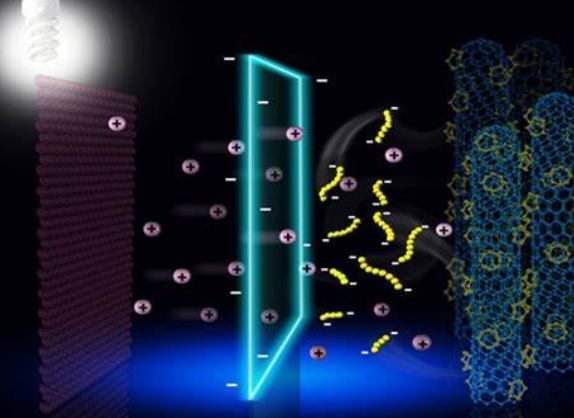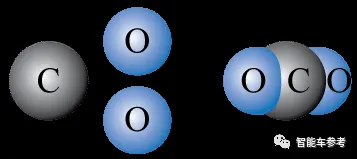The age of super-fast charging is upon us
An eye-catching fast charging device quickly became the center of attention at the recent Shanghai PV exhibition. Huawei's super fast charging system was the highlight of the show, claiming the amazing feat of "one second of charging, one kilometer of range". Not only Huawei, but also car companies such as Xiaopeng, Guangzhou Automobile, Geely and others have launched amazing super fast charging products in recent years. For example, Peng's S4 charging pile single pile maximum power of up to 480 kilowatts, the maximum current up to 670 amps, only 5 minutes to add 210 kilometers of range for the vehicle; Guangqi Ean's A480 charging pile can also be realized in just 5 minutes to charge and extend the range by 200 kilometers; last year, Geely launched the Weirui super fast-charging pile, which claims that "Charge for 5 minutes and extend the range by 300 kilometers"...
These super-fast charging products are rapidly integrating into our daily lives, just like the springtime shoots. Their rapid development is attributed to the booming global new energy vehicle market. The increased penetration of new energy vehicles has driven the rapid growth in demand for charging piles. With the successive release of a series of policies, such as the "Guiding Opinions on Promoting the Development of Energy and Electronics Industry", the "14th Five-Year Plan" for the Implementation of the Strategy of Expanding Domestic Demand, and the "New Energy Vehicle Industry Development Plan (2021-2035)", China's charging piles industry has entered the stage of rapid construction.
In the middle of last month, the National Development and Reform Commission (NDRC) and the National Energy Administration (NEA) jointly issued the "Implementation Opinions on Accelerating the Construction of Charging Infrastructure and Better Supporting New Energy Vehicles in the Countryside and Rural Revitalization". The opinion clearly emphasizes the importance of strengthening the public charging infrastructure layout and construction, and at the same time strive to achieve the suitable use of new energy vehicles in the charging station "county county full coverage" and charging piles "township full coverage" of the target. This policy shows that China has listed the charging pile construction as an important part of the "new infrastructure", injecting a strong development momentum. The charging of new energy vehicles has been regarded as the last problem in the promotion of new energy vehicles, and the charging speed is the most important aspect that needs to be improved. In order to solve the anxiety of car owners about charging, many companies began to develop super fast charging products.
So, what exactly is the so-called "overcharging"?
In the industry, brand-specific DC chargers with a power of 120 kW and above are usually defined as super fast chargers. In layman's terms, a charging power of 1 kW per hour can be interpreted as "charging 1 kWh in 1 hour", while a charging power of 60 kW means "charging 60 kWh in 1 hour". Simply put, it's high power, hard charging!
Super fast charging, "bubbles" galore
However, behind this "more power, faster charging", is everything so rosy? Let's look at a few shocking cases:
On March 15, 2023, a new energy vehicle suddenly smoked and quickly caught fire after charging was completed at a charging station next to the Tashan Cement Plant on Tashan Street in Liuzizhi Special Zone, Liupanshui, Guizhou Province.
And at 2 a.m. on Nov. 17, 2022, an electric van suddenly caught fire and caused an explosion while fast-charging at a charging spot in Xindu District, Chengdu City.
Also on April 21, 2022, a fire suddenly broke out in a parking lot in Licheng District, Putian City, Fujian Province, when a new energy vehicle was charging.
These are fire accidents that occurred during the charging process of electric vehicles! This is a good illustration of the risk of spontaneous combustion that can easily be triggered by overheating and loss of control of lithium secondary batteries under inappropriate charging conditions. This risk is even more pronounced for super-fast charging.
We think the process of charging Li-ion can be compared to pouring beer. The faster the beer is poured, the faster the beer glass is filled, but the more foam there is in the glass; conversely, the slower it is poured, the slower it is filled, but the less foam there is in the glass, the more beer there is. In the case of lithium-ion battery charging, foam can be equated to "damage to the battery".

The damage is done, and we'll summarize it for now as two reasons:
1, frequent fast charging accelerates the polarization of the battery cell
Generally during the charging process of lithium-ion batteries, the diffusion of lithium ions inside the electrodes is relatively slow, while the diffusion of the electrolyte is faster. This diffusion process is mainly controlled by diffusion within the electrode. Since the migration speed of lithium ions within the electrode particles is much smaller than the speed of the electrochemical reaction occurring on the electrode surface, it leads to the phenomenon of concentration polarization at the electrode, which further increases the extent to which the potential difference between the positive and negative electrodes deviates from the equilibrium potential. When the charging current is persistently high, the concentration of lithium ions at the electrodes increases, exacerbating the polarization phenomenon. In this way, the terminal voltage of the battery is not directly linearly proportional to the charge/energy. At the same time, high-current charging leads to an increase in internal resistance, which further exacerbates the Joule heating effect and triggers a series of side reactions, such as decomposition of the electrolyte and gas production. These factors increase the danger of the battery dramatically, negatively affecting its safety and inevitably shortening the service life of non-powered batteries dramatically.
2、Frequent fast charging may lead to crystalization of the core
During the charging process, our control over the lithium ions is actually very weak. We can only guarantee that lithium ions will migrate to the surface of the anode, but can not guarantee that lithium ions will be evenly distributed on the surface of the anode. Fast charging of lithium batteries means that the lithium ions are quickly discharged and "swim to" the anode, which requires the anode material to have a fast lithium embedded capacity. Anode materials used for lithium battery fast charging include carbon materials, lithium titanate and some other new materials. For carbon materials, due to the embedded lithium potential and lithium precipitation potential is almost the same, regular charging is generally preferred by lithium ions embedded in graphite, but in the fast charging or low temperature conditions, lithium ions may precipitate on the surface of the formation of dendritic lithium (also known as precipitation crystal). Dendritic lithium will pierce the diaphragm (SEI), which will cause secondary loss of Li+ and reduce battery capacity. When the lithium crystals reach a certain amount, they will grow from the negative electrode to the diaphragm, causing the danger of a short circuit in the battery, and in serious cases, causing spontaneous combustion of the vehicle, resulting in irreversible consequences!
There is another point to note, most businessmen in the promotion of fast charging, usually emphasized in a very short period of time to fill the battery 80%, rather than completely full 100%.This is because in the fast charging state, the battery's degree of strengthening and internal resistance will rise sharply, and therefore can not maintain the original current continues to be delivered to the battery, and will be turned into a slow charging.
This is why many companies usually only advertise the time it takes to fast charge a battery to 80% without mentioning the time it takes to fully charge it. This is because the charging time will be longer for the remaining 20% after fast charging to 80%.
In addition, there is also the fast charging has been criticized for the phenomenon of "false power".
Rapid charging causes the battery to heat up because during rapid charging, the battery heats up internally due to the high current and the molecules become more active, giving the illusion that the battery is fully charged. However, in reality, during fast charging, the actual amount of power charged into the battery is about 10% less than during slow charging. This is why the so-called "false charge" phenomenon occurs.
To summarize, fast charging, while convenient for our lives, comes with certain risks. It may damage the battery and increase the risk of spontaneous battery combustion. Therefore, as car owners, we should carefully consider our charging method and choose the right one. In non-emergency situations, try to use slow charging equipment. At the same time, as charging pile manufacturers, we should continue to improve the quality of charging piles to ensure that our fast charging equipment meets the quality standards and produce products that can satisfy customers! This way we can enjoy the convenience of fast charging while ensuring safety and user experience.
(Source: NE-SALON June 7, 2023 Responsibility: Mao Gong)
Reprinted for the purpose of transmitting more information, and does not mean that we agree with its views and is responsible for its authenticity.




